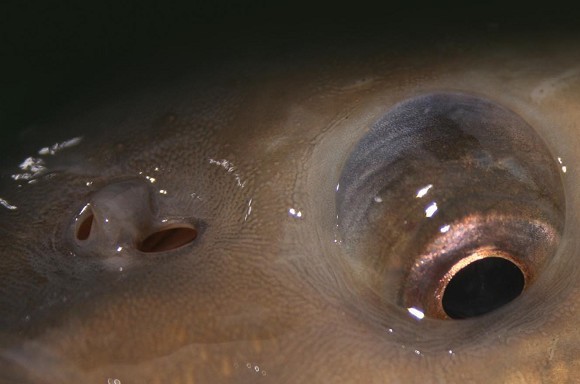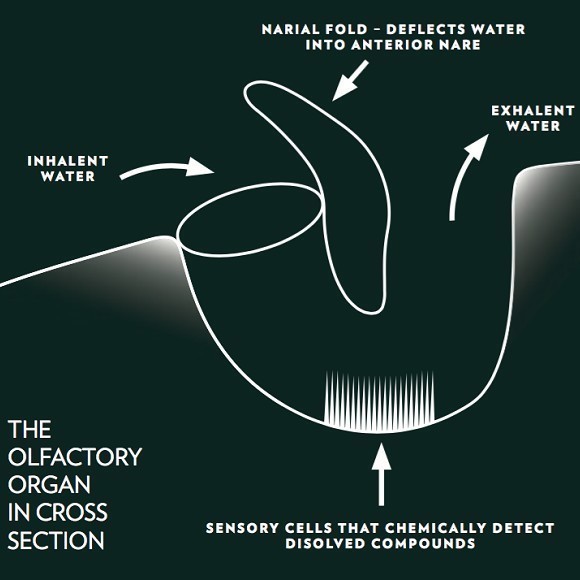
How do carp smell?
Learning the actual mechanics of how a carp lives and breathes - this time we focus on smell
Our resident fish expert and Otley College lecturer, James Anderson is going to take a look at the sense of smell and how carp utilise it to find food.
“In human terms, we consider a sense of smell is for detecting substances in air,” states James, “but for fish, however, the sense of smell detects chemicals dissolved in water. For this reason, attractors included in fishing baits must be water-soluble and the more water-soluble an attractor is, the more easily it will be detected by the carp.
“The olfactory organs (used for smelling) are in the form of a pair of nostrils or nares located between the eyes and mouth on the head of the fish. The nares have a flap of skin externally in between two openings that helps to channel water into a highly sensitive olfactory bulb system. The water entering the olfactory system does not go into the fish’s body and the system can be thought of as a U tube. Each nostril has two openings one for water entering and one for the water exiting.”
The U Tube System
“At the back of the nostril there is a sensory surface called the olfactory epithelium, as water passes over this surface it allows the carp to sense any substance dissolved into that water and determine whether or not it is a good food source. The U tube system provides a constant flow of water over the olfactory epithelium allowing for continuous information being feedback to the carp which aids it in the locating and identification of food items.”
Super sensitive
“The carp’s sense of smell is highly sensitive, far more so than humans and allows it to detect low levels of chemicals given o by natural prey such as bloodworm, snails or other crustaceans. They are also able to distinguish between sweet, savoury and salty substances. The olfactory system is so sensitive the carp is able to detect shrimp hidden in gravel or even bloodworms buried deep in silt beds. The carp uses its sense of smell the locate food sources over long distances, once closer when it is able to touch potential feed items the fish will then rely on the sense of taste to locate and identify feed.”
Use these baits...
“For example, if you were to introduce a large bed of particles into an area with carp passing in and around it the sense of smell will be one of the main senses used to locate the bait. In order to increase the likelihood and speed of the carp homing in on the baited area try introducing items such as liquids, tuna and groundbaits into your spod mix to increase the amount of chemicals dissolving into the water column and attracting the fish in.”






